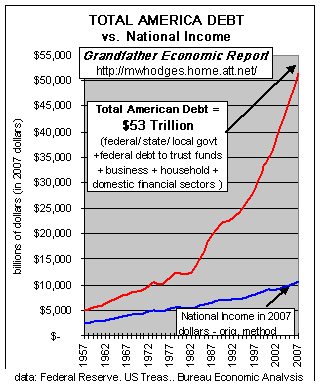An $800 Billion Mistake
As a conservative economist, I might be expected to oppose a stimulus plan. In fact, on this page in October, I declared my support for a stimulus. But the fiscal package now before Congress needs to be thoroughly revised. In its current form, it does too little to raise national spending and employment. It would be better for the Senate to delay legislation for a month, or even two, if that’s what it takes to produce a much better bill. We cannot afford an $800 billion mistake.
Start with the tax side. The plan is to give a tax cut of $500 a year for two years to each employed person. That’s not a good way to increase consumer spending. Experience shows that the money from such temporary, lump-sum tax cuts is largely saved or used to pay down debt. Only about 15 percent of last year’s tax rebates led to additional spending.
The proposed business tax cuts are also likely to do little to increase business investment and employment.
The problem with the current stimulus plan is not that it is too big but that it delivers too little extra employment and income for such a large fiscal deficit. It is worth taking the time to get it right.
The same politicians who are telling us that the stimulus package must be enacted ASAP are the same ones who did not see the financial crisis coming and then tried to deny it. We are being told that we face disaster if we do not act quickly.
The world will not end if this spending bill is not passed this week. We heard the same “we must act now” warnings last year with the $750 billion TARP disaster. The politics of fear is wearing thin. The so called stimulus act should be debated and time given to the American public to decide if this massive expenditure of money will accomplish anything other than running up more debt.
My advice to Congress and the President
How about this? Come clean with the American public about the problems we face as a nation. Admit that we have indebted ourselves to such an extent that our economic future is now at risk. Stop trying to sell the idea that spending and borrower will fix the problem. The problem caused by too much debt cannot be cured by more borrowing. How about admitting that we are overextended financially and need to face sacrifices instead of passing the problem on to our children? If the politicians can’t put these thoughts into words, they can simply hold up a picture of the chart below.
Courtesy: http://mwhodges.home.att.net/
The Real Long-Run Value of Gold
To match its inflation-adjusted peak of $850 an ounce – as recorded by the London PM Gold Fix of 21st Jan. 1980 – the price of gold should now stand nearer $2,615.
“Ask the investor who rushed out to Buy Gold precisely 29 years ago, at $845 an ounce, about gold as an inflation hedge,” as Jon Nadler – senior analyst at Kitco Inc. of Montreal, the Canadian dealers and smelters – said on the 29th anniversary of gold’s infamous peak last week.
“They could sell it for about $845 today…[but] they would need to sell it for something near $2,200 just to break even, when adjusted for inflation.”
Because for gold to reach $2,200 an ounce in today’s money (if not $2,615…) would mean something truly remarkable in terms of its real long-run value.
- Inflation-adjusted, that peak gold price of 21 Jan. 1980 saw the metal worth more than 5 times its purchasing power of 1913;
- In March 2008, just as Bear Stearns collapsed and gold touched a new all-time peak of $1,032 in the spot market, the metal stood at its best level – in terms of US consumer purchasing power – since December 1982;
- Touching $2,200 an ounce (without sharply higher inflation undermining that peak), gold would be worth almost 6 times as much as it was before the Federal Reserve was established in real terms of domestic US purchasing power.
Is gold a smart investment in terms of preserving purchasing power? Depends on when you purchased it as the article explains. Virtually every asset class except gold has seen a major drop in value over the past two years – something to think about.
TURNING JAPANESE – THE AUDACITY OF REALITY
Every day seems worse than the previous day. Five hundred thousand people are getting laid off every month. Our banking system is on life support. Retailers are going bankrupt in record numbers. The stock market keeps descending. Home prices continue to plummet. Home foreclosures keep mounting. Consumer confidence is at record lows. You would like to close your eyes and make it go away. Not only is the news not going away, it is going to get worse and last longer than most people can comprehend.
These “experts” fail to see the big picture and have no sense of history. It took 28 years to get to this point and it will take at least a decade to repair the damage. If the politicians running this country try to take the easy way out (very likely), add another decade to the recovery timeframe. Some indisputable facts will put our current predicament in perspective:
Another great article by James Quinn who assesses America’s economic future. A very sobering and detailed analysis well worth reading.
